Maidenhair Fern (Adiantum Raddianum) Grow & Care Guide
Written by Iris
Dec 23 2021
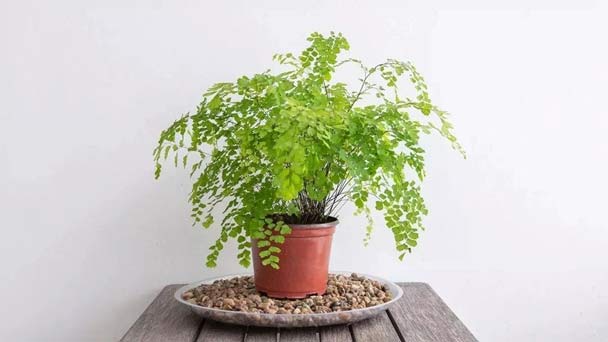
Maidenhair Fern (Adiantum raddianum) is a beautiful green plant, and it has a distinctive lacy appearance, compact growth habit and small leaves. Unlike some of their tropical Cousins, Maidenhair Fern thrive in cold climates, even in the frigid winters of Zion National Park, 3,000 feet in the Utah mountains. One of the reasons that the produces a beautiful green plant is one of the most widely cultivated ornamental ferns in North America is the attractive fragrance of its leaves.
Then, consider humidity: Maidenhair Ferns hate dry air and should be placed as far from air conditioning units as possible. Terra cotta pots can also dry out Maidenhairs Fern' soil, so consider keeping your plant in the plastic pot it came in and then placing that in the decorative planter of your choice.
To further boost humidity, you can place Maidenhair Ferns next to other greenery (plants naturally emit humidity when next to other plants!), next to a humidifier, inside an enclosed glass cloche or terrarium, or even in your bathroom.
Read More:
How To Repot Maidenhair Fern?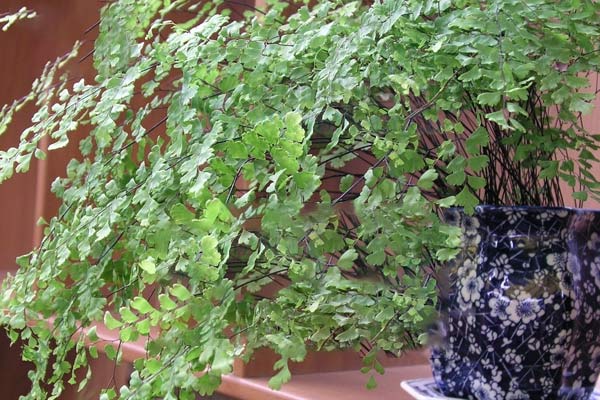
Keep the soil moist when propagating Maidenhair Fern and after a few weeks you will begin to see the gametophytes emerging. This is just one step in the process to achieving a new Maidenhair plant. After fertilization of the gametophyte, the sporophytes aka ferns will begin to emerge.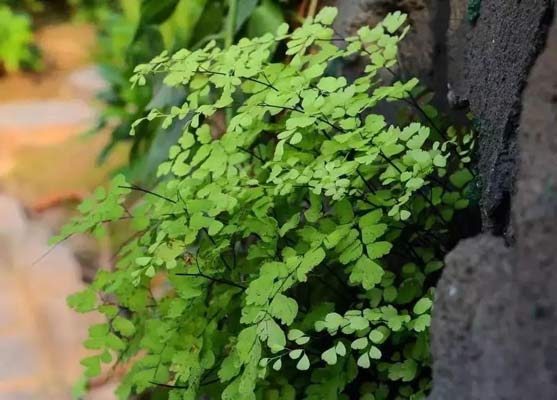
Maidenhair ferns are most often found in nature around springs, waterfalls, rivers, and streams where the constant moisture is accompanied by shady conditions. In fact, these types of plants can even be found growing under rock ledges where any sunlight is a rare occurrence.
Whether you are planning to grow maidenhair fern indoors or outdoors, Maidenhair Fern needs to be protected from the midday sun. This will quickly cause the leaves to turn brown, and could kill your Maidenhair Fern after extended exposure. If you live in the northern hemisphere, an east or north facing windowsill will usually provide perfect light conditions.
Read More:
How To Save My Maidenhair Fern Brown Leaves?
This doesn't mean, however, that you should neglect the choice of soil for your fern. In general, Maidenhair ferns prefer fertile, well-drained soil with a high amount of organic matter.
If you are growing maidenhair fern in a pot, you should definitely find a pot that has drainage holes in the bottom. Despite the fact that Maidenhair Ferns love constantly moist growing conditions, waterlogged soils can damage the root structure, stress Maidenhair, and eventually kill it off. A good, homemade potting mix for your Maidenhair fern is one part potting mix, one part compost, and one part peat. This will ensure that you have a fertile, nutrient dense, well-draining soil for your Maidenhair to thrive. The potting mix offers the base nutrients and growing conditions, the compost offers extra nutrients and moisture retention, while the peat adds a lightweight dimension to help improve drainage and prevent waterlogging.
In terms of soil pH, this type of Maidenhair Fern (Adiantum raddianum) will do better in a slightly alkaline soil, and a bit of ground limestone can be useful in helping to make sure that the roots of Maidenhair Fern can absorb nutrients.
Read More:
What Is The Best Soil For Maidenhair Fern?
Liquid houseplant fertilizer works well for ferns, but Kansas State University Research and Extension recommends feeding at 1/4 the recommended strength every four to six weeks during the active growing season to keep from overfeeding. Fertilize maidenhair ferns only when they are actively growing in the spring and summer and discontinue feeding as growth slows in autumn.
the maidenhair fern aphid, which causes the fronds to curl up and turn black. Hose off aphids, or spray with Confidor (spray plants outdoors in a well-ventilated spot).
scale (brown or black lumps on the stems or leaves) and or mealybugs (fluffy white insects which look like tiny pieces of cotton wool). To control lightly spray with Folimat, Confidor or PestOil (applied at half the recommended rate). Spray plants outdoors in a well-ventilated spot. Badly infested plants should be discarded.
Read More:
What Cauce Maidenhair Fern Dying?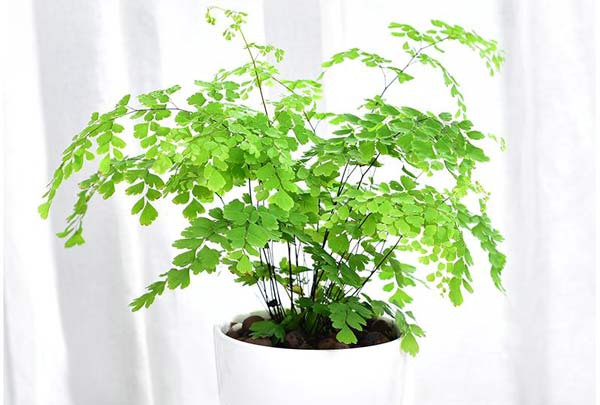
Southern maidenhair (Adiantum capillusveneris)
Rosy maidenhair (Adiantum hispidulum)
Western maidenhair (Adiantum pedatum)
Silver dollar maidenhair (Adiantum peruvianum)
Northern maidenhair (Adiantum pedatum)
Read More:
Are There Different Varieties of Maidenhair Ferns?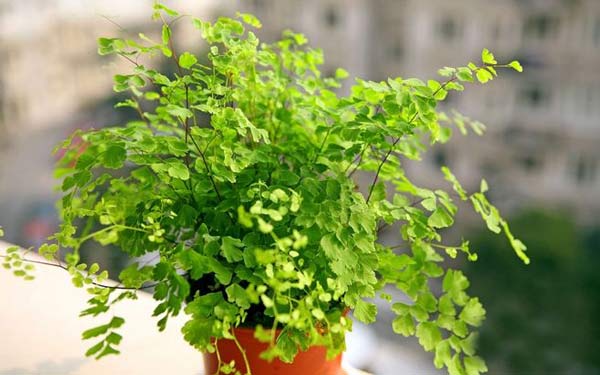
Read More:
Is Maidenhair Fern Toxic to Cats?
Read Next:
20 Popular Vine Plants Indoor To Grow
Ming Fern (Asparagus Myriocladus) Profile: Care & Growing Guide
Java Fern Care & Growing Guide
Blue Star Fern Care: How to Grow & Care for Phlebodium Aureum
How to Grow & Care for Asparagus Fern
Birds Nest Fern (Asplenium Nidus) Profile: Info, Care & Growing Guide
How to Grow and Care for Kimberly Queen Fern
Rabbit Foot Fern Care & Propagation Guide
Staghorn Fern (Platycerium Bifurcatum) Care & Growing Guide
Japanese Royal Fern (Osmunda Japonica) Profile
Where to Plant Maidenhair How to Grow Maidenhair FernPropagating Maidenhair Fern by SporesPropagating Maidenhair Fern by DivisionHow to Care for Maidenhair FernMaidenhair Fern Light CareMaidenhair Fern Soil CareMaidenhair Fern WateringMaidenhair Fern Temperature & HumidityMaidenhair Fern Fertilizer CareMaidenhair Fern Pests & Diseases CareMaidenhair Fern (Adiantum raddianum) VarietiesMaidenhair Fern (Adiantum raddianum) FAQIs maidenhair Fern Toxic to Cats & Dogs?How Big do Maidenhair Ferns Grow?What is Maidenhair Used for?
Where to Plant Maidenhair
It's difficult to recreate the misty environment of a waterfall indoors, which is why Maidenhair Ferns can make for such high-maintenance houseplants. When considering where to place Maidenhair ferns at home, look for a spot that gets ample light but doesn't sit in direct sun all day. Near eastern or northern-facing windowsills, but not directly on them, is a good bet.Then, consider humidity: Maidenhair Ferns hate dry air and should be placed as far from air conditioning units as possible. Terra cotta pots can also dry out Maidenhairs Fern' soil, so consider keeping your plant in the plastic pot it came in and then placing that in the decorative planter of your choice.
To further boost humidity, you can place Maidenhair Ferns next to other greenery (plants naturally emit humidity when next to other plants!), next to a humidifier, inside an enclosed glass cloche or terrarium, or even in your bathroom.
Read More:
How To Repot Maidenhair Fern?

How to Grow Maidenhair Fern
Maidenhair ferns can be propagated via division or from their spores. For higher chances of success and survival always propagate during the warmer months.Propagating Maidenhair Fern by Spores
Maidenhair fern propagation via spores is easy to try. You will know Maidenhair Fern is ready to produce spores when you see the sori (little brown dots on the underside of the leaf tips.) Cut off a few fronds with the sori and place your Maidenhair between two pieces of paper and leave it in a protected space for a week. The Maidenhair Fern spores will drop onto the paper where you can then spread them over the soil in a small pot. Cover the top of the pot with plastic wrap to create a mini greenhouse. Make sure this is not in direct sun as it may get too hot.Keep the soil moist when propagating Maidenhair Fern and after a few weeks you will begin to see the gametophytes emerging. This is just one step in the process to achieving a new Maidenhair plant. After fertilization of the gametophyte, the sporophytes aka ferns will begin to emerge.
Propagating Maidenhair Fern by Division
Take an established Maidenhair Fern and divide the root ball in half by gently ripping or cutting it. Don't worry if a few maidenhair fern leaves die off once the division is complete. Place the new Maidenhair Fern into pots and then continue so treat them as usual. A little seaweed extract added at this time can help the plants deal with any shock from being torn in half by you. Make sure the new pots you plant into aren't too large. Choose something bit bigger than the new root ball until the new Maidenhair Fern is well adjusted to it's new life.
How to Care for Maidenhair Fern
Maidenhair Fern Light Care
Maidenhair ferns grow best in bright indirect light, and are unable to tolerate much direct sunlight. Maidenhair Fern will also tolerate low light conditions, although they will not grow as well as in better light. (Read more about Maidenhair fern light requirement.)Maidenhair ferns are most often found in nature around springs, waterfalls, rivers, and streams where the constant moisture is accompanied by shady conditions. In fact, these types of plants can even be found growing under rock ledges where any sunlight is a rare occurrence.
Whether you are planning to grow maidenhair fern indoors or outdoors, Maidenhair Fern needs to be protected from the midday sun. This will quickly cause the leaves to turn brown, and could kill your Maidenhair Fern after extended exposure. If you live in the northern hemisphere, an east or north facing windowsill will usually provide perfect light conditions.
Read More:
How To Save My Maidenhair Fern Brown Leaves?
Maidenhair Fern Soil Care
Maidenhair ferns are unique in that they have the ability to grow in extremely poor and fragile soils, as long as there is a constant source of shade and moisture. In some cases in the natural world, Maidenhair ferns can even grow on rock walls or ledges where their thin roots find their way into crevices to attach to the wall.This doesn't mean, however, that you should neglect the choice of soil for your fern. In general, Maidenhair ferns prefer fertile, well-drained soil with a high amount of organic matter.
If you are growing maidenhair fern in a pot, you should definitely find a pot that has drainage holes in the bottom. Despite the fact that Maidenhair Ferns love constantly moist growing conditions, waterlogged soils can damage the root structure, stress Maidenhair, and eventually kill it off. A good, homemade potting mix for your Maidenhair fern is one part potting mix, one part compost, and one part peat. This will ensure that you have a fertile, nutrient dense, well-draining soil for your Maidenhair to thrive. The potting mix offers the base nutrients and growing conditions, the compost offers extra nutrients and moisture retention, while the peat adds a lightweight dimension to help improve drainage and prevent waterlogging.
In terms of soil pH, this type of Maidenhair Fern (Adiantum raddianum) will do better in a slightly alkaline soil, and a bit of ground limestone can be useful in helping to make sure that the roots of Maidenhair Fern can absorb nutrients.
Read More:
What Is The Best Soil For Maidenhair Fern?
Maidenhair Fern Watering
Maidenhair Ferns need to be kept moist, but you must also be careful not to overwater or underwater them! Too much water leads to root rot, and not enough water can lead to the plant drying out. If they dry out – Don't give up! A good soaking and Maidenhair Fern should recover and eventually produce new leaves.Maidenhair Fern Temperature & Humidity
When it comes to maidenhair ferns and temperature, just keep in mind that these plants like the same indoor temperatures that most humans do. As such, room temperatures of around 21 °C (70 °F) or more are preferred. A little lower won't be too much of an issue, but temps should really not drop below 15 °C (59 °F) for extended periods of time if you want to prevent frond loss. Maidenhair ferns need humidity to thrive. Many people choose to grow Maidenhair Ferns in a bathroom to take advantage of the warm, moist air, but you can provide humidity in any room with regular misting of the leaves. (Find more Vine Plants Indoor here.)Maidenhair Fern Fertilizer Care
Maidenhair ferns (Adiantum raddianum) need very little fertilizer and will grow steadily by just drawing nutrients from the soil. They are sensitive to the soluble salts found in most conventional fertilizers, so a light hand is needed when measuring and applying fertilizer.Liquid houseplant fertilizer works well for ferns, but Kansas State University Research and Extension recommends feeding at 1/4 the recommended strength every four to six weeks during the active growing season to keep from overfeeding. Fertilize maidenhair ferns only when they are actively growing in the spring and summer and discontinue feeding as growth slows in autumn.
Maidenhair Fern Pests & Diseases Care
Although neglect and drying out are the most common problems with maidenhair ferns they can also suffer from insect attack. Keep an eye out for the following pests:the maidenhair fern aphid, which causes the fronds to curl up and turn black. Hose off aphids, or spray with Confidor (spray plants outdoors in a well-ventilated spot).
scale (brown or black lumps on the stems or leaves) and or mealybugs (fluffy white insects which look like tiny pieces of cotton wool). To control lightly spray with Folimat, Confidor or PestOil (applied at half the recommended rate). Spray plants outdoors in a well-ventilated spot. Badly infested plants should be discarded.
Read More:
What Cauce Maidenhair Fern Dying?

Maidenhair Fern (Adiantum raddianum) Varieties
There are numerous maidenhair species, though the most commonly grown include:Southern maidenhair (Adiantum capillusveneris)
Rosy maidenhair (Adiantum hispidulum)
Western maidenhair (Adiantum pedatum)
Silver dollar maidenhair (Adiantum peruvianum)
Northern maidenhair (Adiantum pedatum)
Read More:
Are There Different Varieties of Maidenhair Ferns?

Maidenhair Fern (Adiantum raddianum) FAQ
Is maidenhair Fern Toxic to Cats & Dogs?
The ASPCA does not specify whether maidenhair fern is toxic to cats and dogs. However, Maidenhair Fern (Adiantum raddianum) is generally believed to be non-toxic to cats & dogs. Just to be safe, you may still want to discourage your pets from nibbling on the Maidenhair Fern leaves to avoid any negative reactions: ingestion of any plant can cause mild irritation or diarrhea.Read More:
Is Maidenhair Fern Toxic to Cats?
How Big do Maidenhair Ferns Grow?
Maidenhair Fern grows 12-16 inches tall.What is Maidenhair Used for?
Maidenhair fern is used for bronchitis, coughs, whooping cough, and heavy menstruation with cramps. It is also used to loosen chest congestion. Some people apply maidenhair fern directly to the scalp for hair loss and to make hair darker.Read Next:
20 Popular Vine Plants Indoor To Grow
Ming Fern (Asparagus Myriocladus) Profile: Care & Growing Guide
Java Fern Care & Growing Guide
Blue Star Fern Care: How to Grow & Care for Phlebodium Aureum
How to Grow & Care for Asparagus Fern
Birds Nest Fern (Asplenium Nidus) Profile: Info, Care & Growing Guide
How to Grow and Care for Kimberly Queen Fern
Rabbit Foot Fern Care & Propagation Guide
Staghorn Fern (Platycerium Bifurcatum) Care & Growing Guide
Japanese Royal Fern (Osmunda Japonica) Profile
Latest Updated
- Benefits of Bugleweed - 7 Science-backed Health Benefits
- Bugleweed Dangers & Side Effects - Is It Poisonous?
- How to Plant Evergreen Trees - What You Should Know
- When to Plant Evergreens - Grow Guide for Evergreen Trees
- 12 Wonderful Evergreen Shrubs for Your Garden
- 12 Popular Evergreen Plants with Pictures for Beginners
- When And How To Prune A Lilac Bush Like a Pro
- How to Grow & Care for Lilac Vine (Hardenbergia Violacea)
- Japanese Lilac Tree (Syringa Reticulata) Care & Propagation Guide
- Shumard Oak Pros and Cons - What to Know
Popular Articles
- Winter maintenance of Antirrhinum Majus
- How to Grow Terminalia Mantaly Tree
- How to Grow and Care for Crossostephium Chinense
- How to grow Antirrhinum Majus in spring
- Peristeria Elata (Dove Orchid) Profile: Info & Care Guide
- Underwatered Snake Plant (Sansevieria Trifasciata) - Signs And How To Fix
- How to Care for Brazilian Jasmine Plant (Mandevilla Sanderi)
- How to Grow & Care for Graptopetalum Purple Delight in Summer
- Rosa Chinensis (China Rose): Plant Growing & Care Tips
- How to Care for Baby Sun Rose (Aptenia Cordifolia)